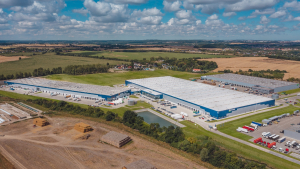
A recent increase in supply is providing buyers with a broader selection of opportunities across CEE. Martin Ofner, Head of Market Analysis at Arnold Investments, shared with Property Forum his investment outlook for the CEE region.
Martin Ofner will be a speaker at the upcoming CEE Property Forum 2023 in Vienna.
From a broader perspective, how do you evaluate the performance of the CEE region in 2023?
In general, the market environment in the CEE region presents several challenges in 2023. These challenges stem from various factors, including the ongoing conflict in Ukraine, significantly higher base rates compared to Western Europe, and a reliance on international capital.
In the first half of the year, we registered an investment volume of around €2.8 billion, which corresponds to a decline of 71% compared to H1 2022. In a European comparison, however, the decline of investment activity is somewhat more pronounced in the CEE region than in other markets which, in turn, has led to price adjustments. So, we see prime yields between 100 and 130 basis points higher than one year ago.
Within the CEE region, the investment market in the Czech Republic was the most stable in terms of investment volume. Local investors stepped in and partially compensated for the low investment activity of international investors in 2023.
Which asset classes are the most popular among investors from a European-wide perspective, in contrast to the CEE region?
If we look at the European investment market, based on H1 2023 data, office properties took the lead with around 29% of the total volume, followed by residential properties with 23%. With the exception of hotels, all other property types were down by between 51% and 62% in a year-on-year comparison. The hotel investment market continues to perform exceptionally well and has recorded its strongest first half of the year since 2019.
In the CEE region, investment activity was dominated by retail and office properties, followed by industrial and logistics. The emerging segment of residential real estate investment recorded a slowdown and accounted for only around 3% of total volume. Following the European-wide trend, the hotel investment volume in the CEE region also increased in a year-on-year comparison.
Despite the current situation, would you advise investing right now or rather wait? What does your data indicate?
Given the price corrections of the last 12 months, the current listings are offering very attractive yields, reminiscent of levels seen about seven years ago. Furthermore, we have noticed an increase in supply starting from June 2023, which has provided buyers with a broader selection of opportunities.
Although we expect further yields to develop further by the end of the year, I would advise investing now, in order to take good advantage of the extensive availability before competition intensifies again.
Why are investors currently investing in the CEE region? What are the motives behind their investment decisions?
One point in particular that attracts investors are the generally higher yield levels compared to Western Europe. This implies that large-scale institutional investors, which will sooner or later be forced to search for performance to keep up with alternative investment options, will focus on the CEE region again. In general, the higher growth perspectives of the CEE economies also trigger higher demand for real estate from the user side, which will also result in a more dynamic investment market in the long run.
What are the main advantages of your ten European branch offices in the main capital cities for your clients?
We are probably the only real estate investment company with owner-led and owned branches across Europe. Generally, you either have the big international networks or local players. We fill the gap between, and our clients highly value that expert position.
As a consequence, our customers enjoy a very broad range of investment opportunities and the deep local and international expertise of our staff. Moreover, potential sellers have the option to take advantage of the Arnold Investment network, which is one of the most diverse across Europe.
As regards my area of responsibility, market analysis, the international orientation means that we can provide our customers with up-to-date market information regarding the European investment markets at any time. This is where local expertise in combination with a strong European market analysis team helps our customers to make well-founded investment decisions.
Since the end of last year, Arnold Investments has been providing publicly accessible market data for all asset classes, for all countries where you are active, and for the EU as a whole. How is this service being received?
I am very pleased that our new market analysis tool is generating such positive feedback from all kinds of market participants. In order to increase market transparency, we provide quarterly yield levels for a large number of property types, as well as the most relevant investment activity metrics. Our approach is to make the key market indicators easily available and clearly laid out so that you don't have to search through pages and pages of PDF documents, as you had to do in the past.
I would like to invite all readers to take a look at the AI market analysis on www.arnold.investments/market and would be very pleased to receive your feedback and comments.
Last but not least, what is your outlook for the end of this year and 2024?
For autumn 2023 and the beginning of 2024, we expect higher activity on the investment markets. Our cautious optimism is based on the diverse range of offerings in combination with the most attractive pricing for several years. The initial benchmark transactions in the summer of 2023 provided higher price transparency in many European markets and confirmed the new yield levels. We expect yields to peak by the end of the year, though the exact extent of the increase will be closely linked to the further development of the ECB policy rate. a



